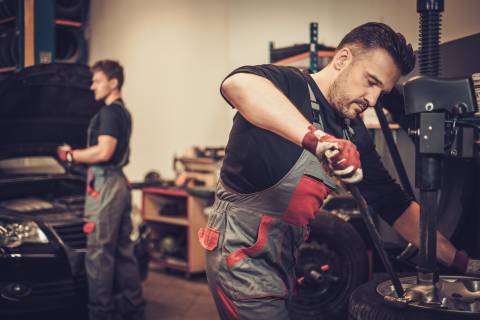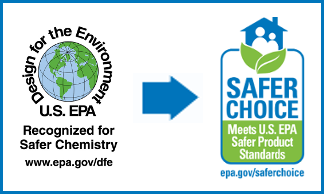 Did you know that everyday activities at your business can have a negative impact on local water quality? Dirt, trash, nutrients and toxic chemicals can contaminate stormwater runoff and local waterways. Even washing your vehicles and equipment can result in discharges containing soaps, oils and fuels, which end up - untreated - in the storm sewer system and ultimately to your local waterway.
Did you know that everyday activities at your business can have a negative impact on local water quality? Dirt, trash, nutrients and toxic chemicals can contaminate stormwater runoff and local waterways. Even washing your vehicles and equipment can result in discharges containing soaps, oils and fuels, which end up - untreated - in the storm sewer system and ultimately to your local waterway.
- Sweep up litter and dirt from sidewalks and driveways.
- Prevent dirt from leaving your property. Seed and mulch or establish lawns in bare areas as soon as possible.
- Dispose of paint and cleaning materials properly. Learn how to by calling the Hazardous Waste Disposal Hotline at (970) 498-5771.
- Use Safer Choice and Biodegradable products
For valuable stormwater-related resources, please visit our Videos and Helpful Links pages.
Spill Kits
Any business should keep a spill kit that is ready to use when needed. Items to include:
- Personal protective equipment (PPE) such as googles and gloves.
- Absorbent materials (pads, pillows, powders) to soak up the spill. Some absorbent materials are universal and can be used to soak up just about any liquid, while some spills (battery acid, fuel, hazardous materials) may require specialized absorbent.
- Broom and dustpan to sweep up used absorbent powder.
- Waste disposal bags to dispose of used absorbent materials.
- Socks, booms, covers or other storm drain protection.
You can make your own kit or purchase a ready-made kit. Make sure the spill kit is clearly labeled and easily accessible.
Only rain down the storm drain
Soaps, sediment, chemicals and other contaminated runoff can pollute nearby waterways and harm fish and wildlife. It can even reach groundwater, which is where we get our drinking water. Never dump waste water or wash water onto hard surfaces that empty into storm drains.
Keep it covered
The most effective way to reduce polluted stormwater from running off your property is to keep it from picking up pollution in the first place.
- Keep dumpsters covered or have working lids. Inspect dumpster for leaks and fix immediately.
- Barrels and containers with any amount of hazardous material such as oil, chemicals, batteries or paint must be stored in a covered area or have a lid to keep rainwater out.
- Post signs to remind employees of best practices and proper use.
Clean without polluting

Ensure equipment and outdoor cleaning projects aren't sending pollutants to storm drains. Storm runoff that enters a storm drain doesn't go to a wastewater treatment plant, it ends up in our streams, rivers, lakes and the groundwater that supplies our faucets.
- Wash vehicles at a commercial wash or in a covered area that drains to a sanitary sewer.
- Never pressure wash hard surfaces or equipment unless you are sure the wash water flows to a sanitary sewer.
- Keep equipment clean and maintained to avoid leaks that can become contamination sources.
- Sweep, never wash outdoor spills of any type or size. Apply absorbent material like kitty litter or
rags, sweep it into a bag, and dispose of it in the trash or at the hazardous waste materials center. - Conduct cleaning activities indoors. If outdoors, contain the cleaning activity and collect discharge water.
Contain sources of pollution
Best management practices and structural features of your workplace can prevent spills from polluting stormwater. Always be prepared to contain and clean up spills.
- Inventory your business to know where liquids are stored, handled, delivered and disposed. Secure liquids at each of these locations to prevent accidental spills.
- Hazardous materials and pollution sources should have secondary containment barriers such as permanent or mobile berms, capture containers or some type of dedicated area that will stop runoff.
